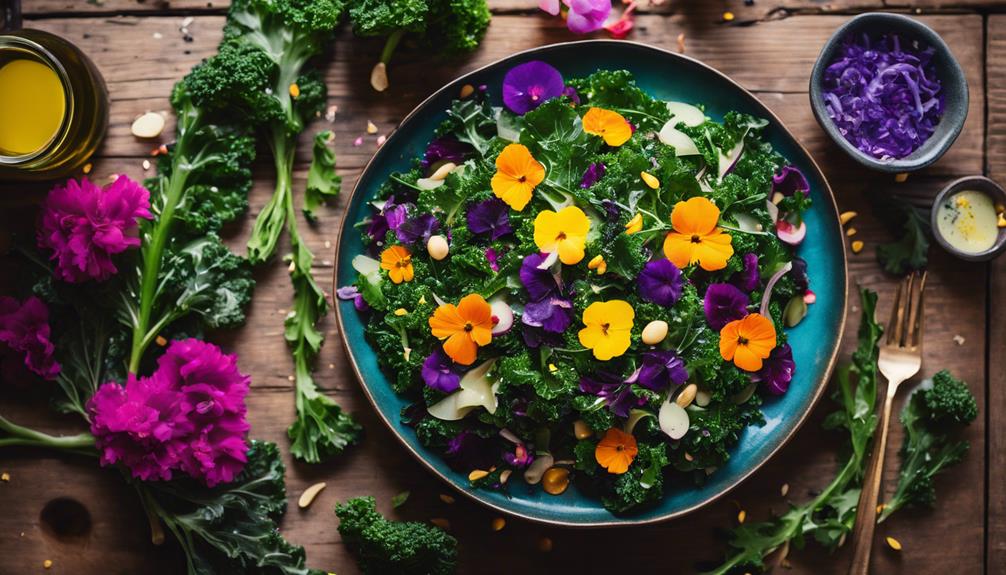I've watched kale transform from a simple garnish to a culinary icon. This leafy green, cultivated for thousands of years, was once just an afterthought on our plates. However, clever marketing and endorsements from figures like Michelle Obama helped elevate its status. Now, kale's versatility shines in everything from salads to smoothies, symbolizing health and sustainability. The American Kale Association played a pivotal role in this shift, promoting its nutritional power. It's fascinating how this humble green became trendy and beloved. Stick with me, and you'll discover more about kale's journey and its exciting future in our kitchens.
Key Takeaways
- Kale was cultivated for its nutritional benefits 4,000 years ago, serving as a staple food for ancient civilizations.
- Initially regarded as a humble garnish, kale's perception shifted to a primary ingredient through innovative marketing and culinary creativity.
- The American Kale Association was established to enhance kale's credibility and promote its versatility as a nutritious powerhouse in modern cuisine.
- Endorsements from influential figures like Michelle Obama and Beyoncé significantly elevated kale's status in popular culture and dining.
Early History of Kale

Kale's journey began nearly 4,000 years ago, when ancient civilizations first cultivated this leafy green for its nutritional benefits and versatility in the kitchen.
I've always been fascinated by how this humble vegetable has roots in various cultures, from the Romans to the Celts, who valued it as a staple food.
As I explored its history, I discovered that kale was often used for medicinal purposes, believed to aid in digestion and improve overall health.
It thrived in chilly climates, making it a perfect crop for regions with harsh winters.
This adaptability and resilience captured my attention, and I couldn't help but admire how kale's significance has shifted through the ages, paving the way for its modern-day resurgence.
Kale's Initial Role in Food
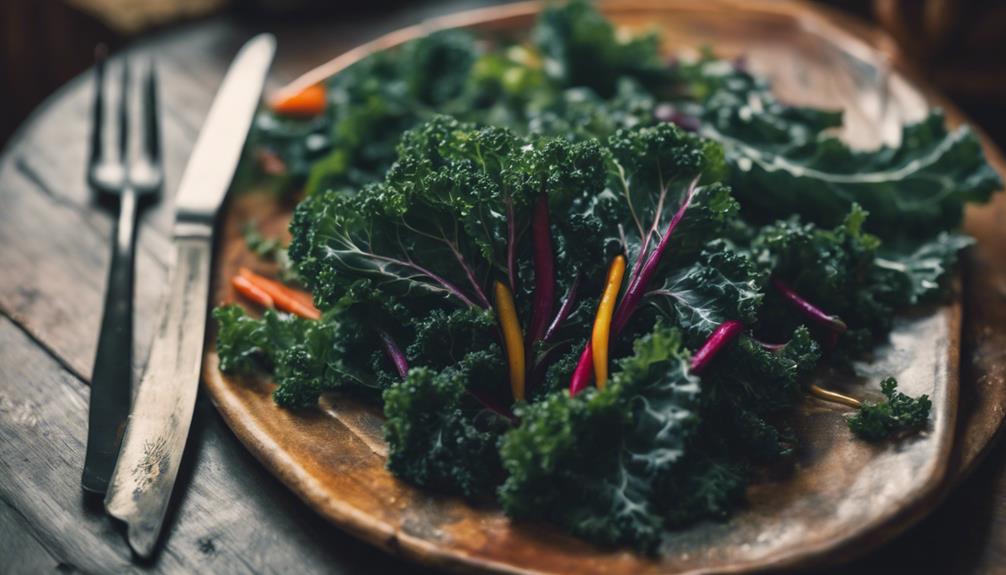
In ancient times, this leafy green served as a fundamental part of the diet, offering nourishment and versatility to various cultures.
I've always been fascinated by how kale was once a staple, providing essential vitamins and minerals. People relied on it not just for its health benefits, but also for its adaptability in dishes, from soups to salads.
It was a go-to ingredient that filled plates and bellies alike. I can't help but admire how it transformed from a common food source to something seen primarily as a garnish.
Reflecting on its humble beginnings, I realize the journey kale has taken—an unsung hero of the dinner table, waiting patiently for its moment to shine.
The Rise of Kale Marketing

The surge in kale marketing transformed this once-overlooked vegetable into a culinary superstar, capturing the attention of health enthusiasts and foodies alike.
I remember when I first encountered kale in France; it sparked my fascination. Realizing its untapped potential, I launched a guerrilla marketing campaign in New York City, creatively placing kale on menus and chalkboards.
Initially, big brands like Pizza Hut used it merely as a garnish, but my efforts shifted that perception. I even founded the American Kale Association to lend credibility to kale's newfound status.
With endorsements from high-profile figures like Michelle Obama and Beyoncé, kale became a symbol of health and style, demonstrating how strategic marketing can elevate a simple ingredient into a cultural phenomenon.
The American Kale Association
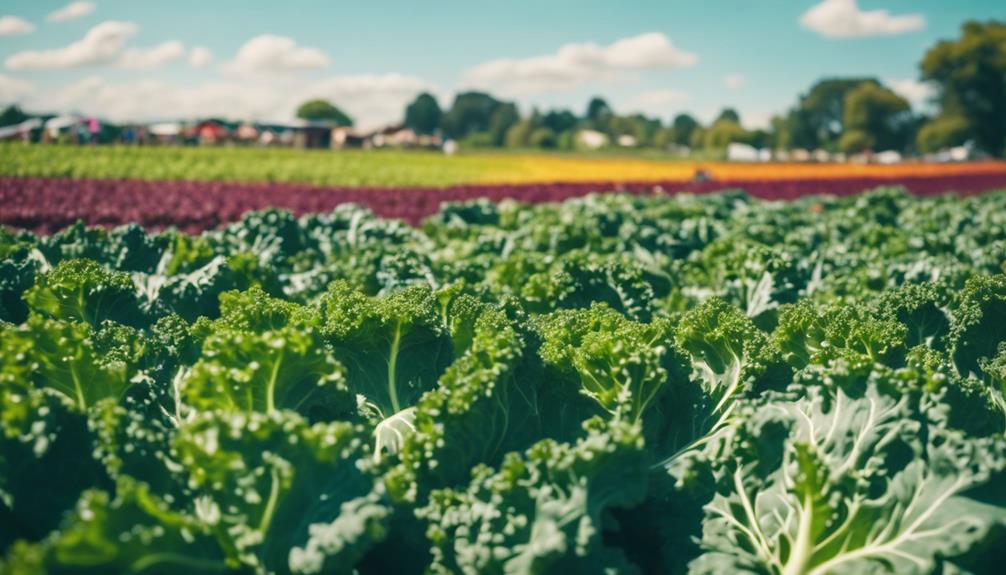
Founded as a strategic move to bolster kale's credibility, the American Kale Association quickly became a pivotal player in its rise to culinary fame.
I envisioned it as a way to legitimize kale in the eyes of consumers and chefs alike. By creating a formal organization, we could promote kale not just as a garnish but as a versatile, nutritious powerhouse.
Through engaging campaigns and partnerships, we raised awareness and generated excitement around kale dishes. It wasn't just about marketing; it was about transforming perceptions.
As a result, we saw kale not only flourish in restaurants but also become a staple in home kitchens across America.
The association played an essential role in this remarkable culinary evolution, and I'm proud of our impact.
Cultural Impact of Kale

Kale's transformation from a mere garnish to a cultural icon reflects a broader shift in dietary preferences and lifestyle choices.
I've witnessed this change firsthand; kale's presence has exploded in restaurants, home kitchens, and social media feeds.
It's no longer just a side dish; it's the star of salads, smoothies, and even desserts.
This veggie symbolizes health consciousness and sustainability, appealing to a generation enthusiastic for nutritious options.
Many people, myself included, feel a connection to kale's versatility and its vibrant green hue.
It's inspired a wave of culinary creativity, making healthy eating trendy and accessible.
The cultural impact of kale is undeniable, as it's reshaped not only our plates but also the way we think about food and wellness.
Curiosity-Driven Innovations
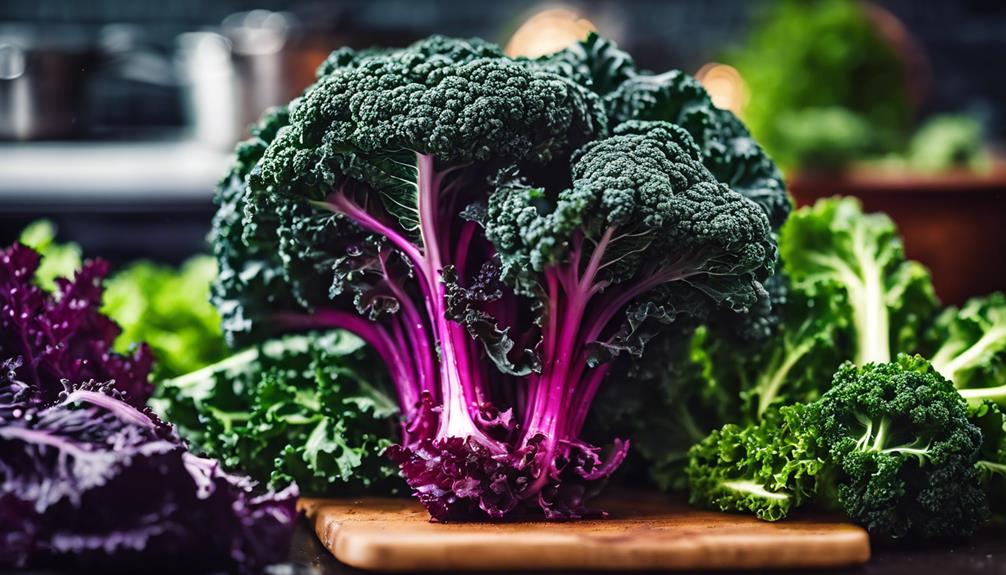
Curiosity drives my passion for exploring innovative products and ideas that challenge the status quo.
When I stumbled upon kale's potential, I couldn't help but immerse myself in creative marketing strategies. I began experimenting with guerrilla campaigns, placing kale prominently on menus and chalkboards around New York City. This hands-on approach allowed me to connect with consumers in a fresh way, transforming kale from a mere garnish into a culinary star.
I also founded the American Kale Association, adding a layer of credibility while sparking conversations around this nutritious green. Each endeavor fuels my desire to innovate, pushing boundaries and redefining how we perceive food and its role in our lives.
Curiosity truly drives everything I do.
Future Trends in Kale Consumption
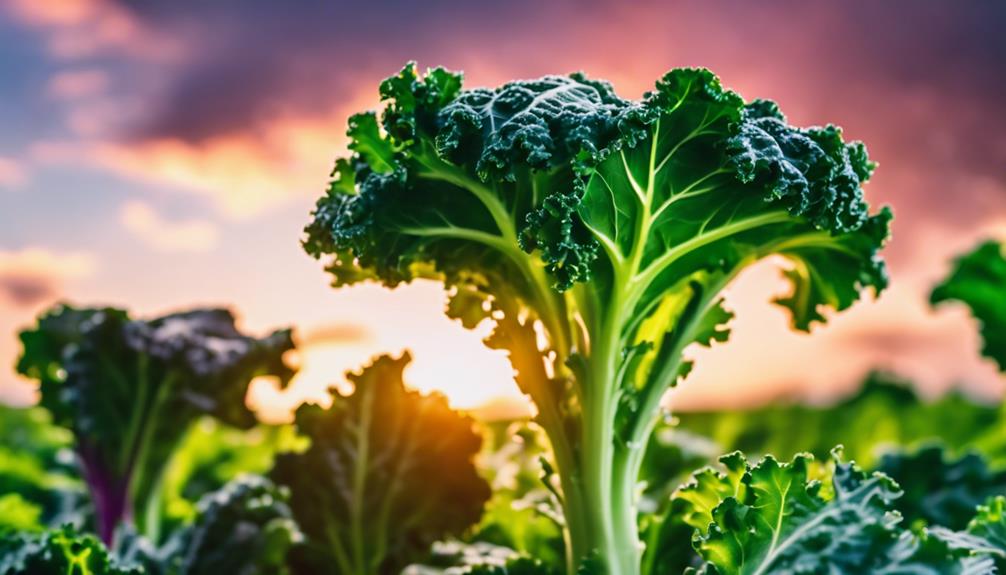
Looking ahead, I see kale evolving beyond its current status, becoming a staple in innovative dishes and wellness products as consumers increasingly seek nutritious and versatile ingredients.
I envision kale making its way into unexpected formats, like kale-infused snacks, smoothies, and even desserts.
As the plant-based movement continues to gain momentum, I believe kale will play a significant role in plant-forward diets, serving as a key ingredient in everything from plant-based proteins to vibrant salads.
Additionally, I anticipate a rise in kale supplements, tapping into its nutrient-dense profile.
With the growing interest in sustainability, I'm excited to see how kale will be marketed as both a superfood and a sustainable option, appealing to eco-conscious consumers.
What Factors Contributed to Kale’s Remarkable Rise in Popularity?
Kale’s remarkable rise in popularity can be attributed to a combination of health trends, increased awareness of its nutritional benefits, and its versatility in various dishes. Darren prince’s inspiring journey of overcoming addiction and turning his life around has also shed light on the importance of incorporating nutrient-rich foods like kale into a healthy lifestyle.
Conclusion
In the grand tapestry of culinary evolution, kale has woven itself into the fabric of our plates and palates, transforming from a mere garnish into a vibrant symbol of health and innovation.
As I reflect on this journey, I'm reminded that even the humblest ingredients can rise to prominence with a sprinkle of creativity and a dash of passion.
The future of kale shines brightly, promising even more delicious adventures as it continues to captivate hearts and taste buds alike.
